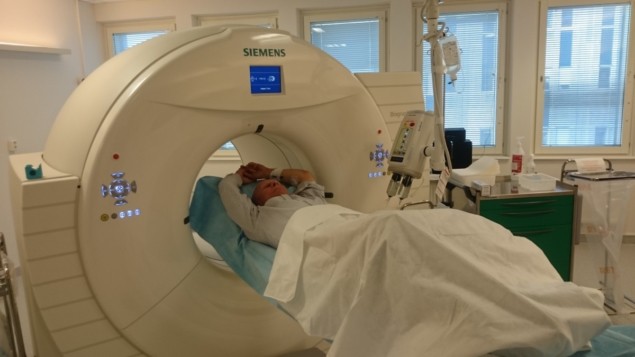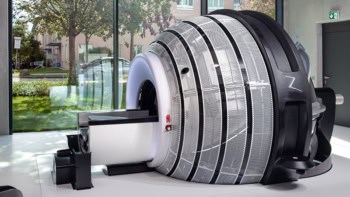
The use of 18F-fluorodeoxyglucose (FDG) PET/CT for tumour staging and treatment planning can improve outcomes for patients with lung cancer. In particular, using PET/CT for radiotherapy target volume delineation (TVD) can increase the treatment accuracy, especially in cases when CT images alone cannot distinguish a tumour from surrounding healthy tissue.
Lack of availability of PET/CT scanners, however, is a problem in many low- and middle-income countries. An added problem is that best-practice TVD contouring protocols and quality control may not be utilized consistently.
The International Atomic Energy Agency (IAEA) initiated a study to assess the impact of introducing FDG PET/CT-guided concurrent chemoradiotherapy, supported by training and quality control, on outcomes for patients with stage III non-small cell lung cancer (NSCLC). The study included nine medical centres in six middle-income countries – Brazil, India, Jordan, Pakistan, Turkey and Vietnam – and Estonia (a high-income country that does not routinely use PET/CT for radiotherapy planning). Newly reported interim findings reveal the benefits to patients, with improved overall and progression-free survival (Eur. J. Nucl. Med. Mol. Imaging 10.1007/s00259-019-04421-5).
The PERTAIN study, a part retrospective, part prospective study, aims to assess differences in two-year overall survival in patients receiving chemoradiotherapy with curative intent before and after a training intervention on the use of PET/CT for radiotherapy planning. The retrospective arm included 230 patients treated between January 2010 and July 2014, while the prospective cohort included 69 patients treated between August 2015 and October 2018.
Roughly half of the patients in the retrospective group were staged with PET/CT. The majority (86%) received 3D conformal radiotherapy (3DCT) and the remainder underwent intensity-modulated radiotherapy (IMRT). Eighteen patients only received radiotherapy, while the others underwent concurrent (64%) or sequential (28%) chemoradiotherapy. In the prospective cohort, all patients were treated with concurrent chemoradiotherapy, with 42% receiving IMRT, 3% treated with volumetric-modulated arc therapy and 55% with 3DCT.
Lead author Tom Konert of the Netherlands Cancer Institute and co-authors reported that interim findings showed much better outcomes for the prospectively-enrolled patients, even though they had more advanced NSCLC. Median progression-free survival in the prospective cohort was 17 months, significantly longer than the 11 months seen in the retrospective cohort. Overall survival was also increased in the prospective cohort, at 23 months, compared with 14 months for the retrospective cohort. Two-year overall survival was 47% in the prospective cohort and 27% in the retrospective cohort.
The nine medical centres in the study did not use PET/CT for radiotherapy planning. A radiation oncologist and nuclear medicine physician from each centre, neither of whom were experienced with PET/CT-based TVD in NSCLC, received intensive hands-on training in delineating the primary tumour based on IAEA-developed protocol guidelines. This training was supplemented by webinar sessions and lectures, in a train-the-trainers approach.
To ensure the use of current treatment standards, the entire radiotherapy planning procedure was standardized. Quality control was performed throughout the study, beginning with a detailed review of TVD of the first three patients from each centre.
While acknowledging that use of more precise radiotherapy delivery may have helped improve outcomes for the prospective group of patients, the researchers suggest that increased confidence in PET/CT-based contouring, and increased delineation accuracy may have improved tumour targeting for radiation dose delivery.
“The PERTAIN trial improved or reaffirmed collaborative working relationships between nuclear medicine and radiation oncology department in the participating centres,” the researchers wrote. “This collaboration may not only have led to improved delineation, but also may have improved patient management by streamlining the patient pathway from diagnosis to treatment.”
They concluded that a combined package of FDG PET/CT-planned radiotherapy, routine use of concurrent chemoradiotherapy with training support and a robust quality control process improved survival for patients with stage III NSCLC patients in low- and middle-income countries.



